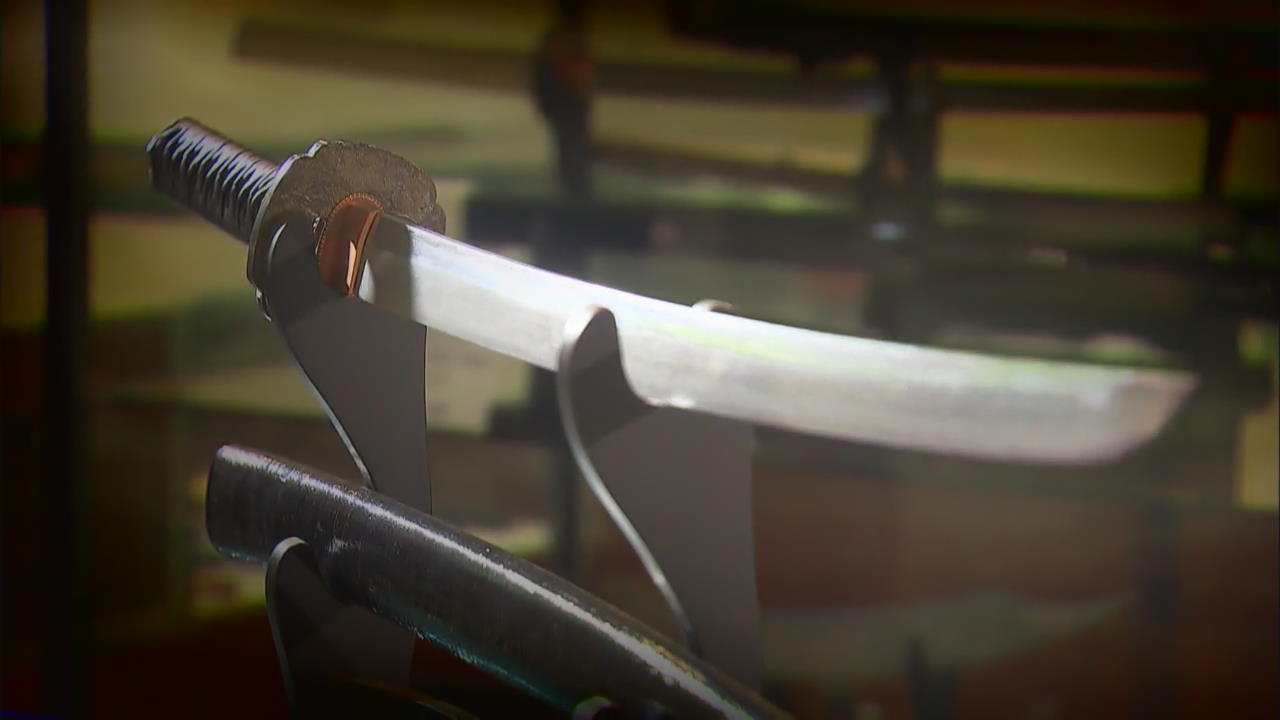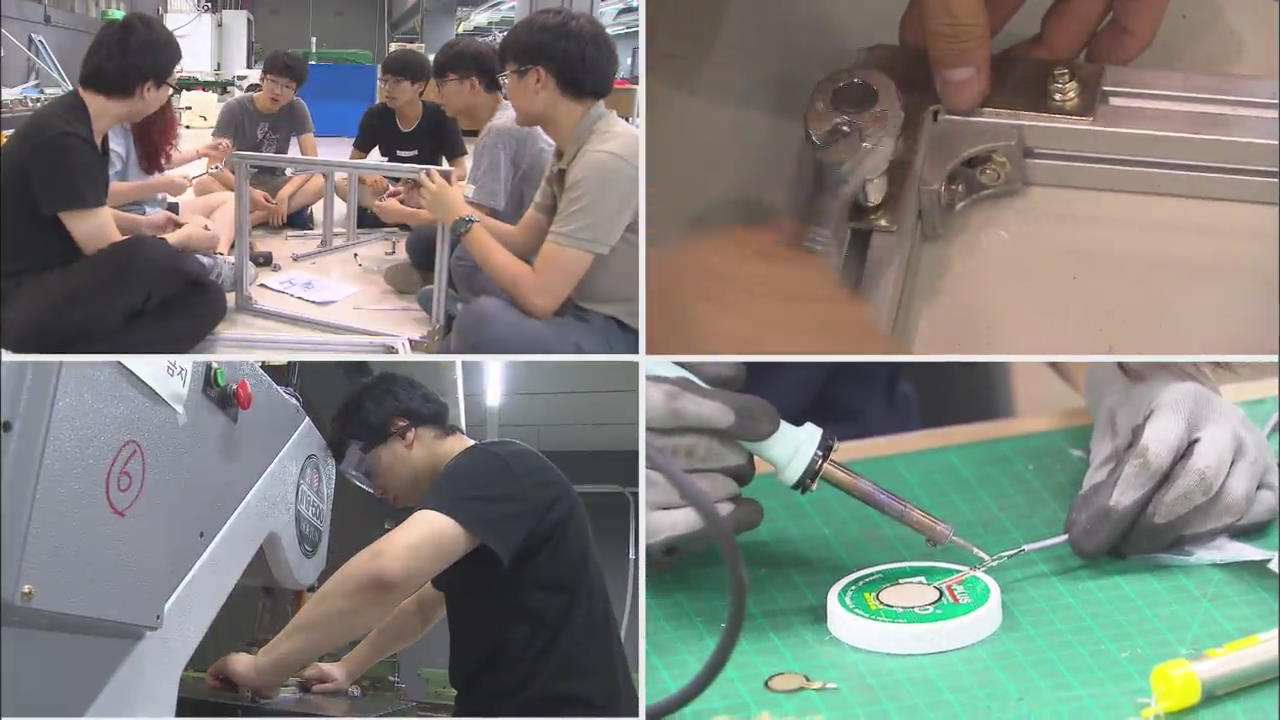Updating Tradition
입력 2016.06.28 (14:20)
수정 2016.06.28 (14:25)
읽어주기 기능은 크롬기반의
브라우저에서만 사용하실 수 있습니다.
[Anchor Lead]
Efforts to combine Korean traditional technologies with modern science are gaining pace in Korea. The aim is developing high value-added products with an eye to the global market. Take a look.
[Pkg]
This blade was made using an ancient welding technique whereby a piece of iron is folded into thousands of layers. The traditional Korean technology was lost when Korea fell under Japanese colonial rule. Meanwhile, the technology was transferred to Japan, where it was used to produce the world's most highly regarded knives. Recently, Korea has been trying to modernize its traditional technologies, albeit belatedly, to publicize them in the global market.
[Soundbite] Han Jung-wook(Master of Traditional Blades) : "By combining superb traditional welding and steelmaking technologies with KIST technologies, we can produce steel of outstanding quality as a material for kitchen knives and other utensils."
This is how a filament material used in 3D printing is produced. Made with natural cypress powder instead of plastic, it boasts higher durability and contains zero harmful substances. Methods that employ traditional materials are being used in diverse areas.
[Soundbite] Lee Heon-ju(PhD, KIST) : "We can produce materials for 3D printing and construction by using mud, wood and straw, as well as traditional adhesives made of lacquer."
Korean traditional technologies combined with the latest advancements in science are increasingly making inroads into the global market.
Efforts to combine Korean traditional technologies with modern science are gaining pace in Korea. The aim is developing high value-added products with an eye to the global market. Take a look.
[Pkg]
This blade was made using an ancient welding technique whereby a piece of iron is folded into thousands of layers. The traditional Korean technology was lost when Korea fell under Japanese colonial rule. Meanwhile, the technology was transferred to Japan, where it was used to produce the world's most highly regarded knives. Recently, Korea has been trying to modernize its traditional technologies, albeit belatedly, to publicize them in the global market.
[Soundbite] Han Jung-wook(Master of Traditional Blades) : "By combining superb traditional welding and steelmaking technologies with KIST technologies, we can produce steel of outstanding quality as a material for kitchen knives and other utensils."
This is how a filament material used in 3D printing is produced. Made with natural cypress powder instead of plastic, it boasts higher durability and contains zero harmful substances. Methods that employ traditional materials are being used in diverse areas.
[Soundbite] Lee Heon-ju(PhD, KIST) : "We can produce materials for 3D printing and construction by using mud, wood and straw, as well as traditional adhesives made of lacquer."
Korean traditional technologies combined with the latest advancements in science are increasingly making inroads into the global market.
■ 제보하기
▷ 카카오톡 : 'KBS제보' 검색, 채널 추가
▷ 전화 : 02-781-1234, 4444
▷ 이메일 : kbs1234@kbs.co.kr
▷ 유튜브, 네이버, 카카오에서도 KBS뉴스를 구독해주세요!
- Updating Tradition
-
- 입력 2016-06-28 14:24:28
- 수정2016-06-28 14:25:22

[Anchor Lead]
Efforts to combine Korean traditional technologies with modern science are gaining pace in Korea. The aim is developing high value-added products with an eye to the global market. Take a look.
[Pkg]
This blade was made using an ancient welding technique whereby a piece of iron is folded into thousands of layers. The traditional Korean technology was lost when Korea fell under Japanese colonial rule. Meanwhile, the technology was transferred to Japan, where it was used to produce the world's most highly regarded knives. Recently, Korea has been trying to modernize its traditional technologies, albeit belatedly, to publicize them in the global market.
[Soundbite] Han Jung-wook(Master of Traditional Blades) : "By combining superb traditional welding and steelmaking technologies with KIST technologies, we can produce steel of outstanding quality as a material for kitchen knives and other utensils."
This is how a filament material used in 3D printing is produced. Made with natural cypress powder instead of plastic, it boasts higher durability and contains zero harmful substances. Methods that employ traditional materials are being used in diverse areas.
[Soundbite] Lee Heon-ju(PhD, KIST) : "We can produce materials for 3D printing and construction by using mud, wood and straw, as well as traditional adhesives made of lacquer."
Korean traditional technologies combined with the latest advancements in science are increasingly making inroads into the global market.
Efforts to combine Korean traditional technologies with modern science are gaining pace in Korea. The aim is developing high value-added products with an eye to the global market. Take a look.
[Pkg]
This blade was made using an ancient welding technique whereby a piece of iron is folded into thousands of layers. The traditional Korean technology was lost when Korea fell under Japanese colonial rule. Meanwhile, the technology was transferred to Japan, where it was used to produce the world's most highly regarded knives. Recently, Korea has been trying to modernize its traditional technologies, albeit belatedly, to publicize them in the global market.
[Soundbite] Han Jung-wook(Master of Traditional Blades) : "By combining superb traditional welding and steelmaking technologies with KIST technologies, we can produce steel of outstanding quality as a material for kitchen knives and other utensils."
This is how a filament material used in 3D printing is produced. Made with natural cypress powder instead of plastic, it boasts higher durability and contains zero harmful substances. Methods that employ traditional materials are being used in diverse areas.
[Soundbite] Lee Heon-ju(PhD, KIST) : "We can produce materials for 3D printing and construction by using mud, wood and straw, as well as traditional adhesives made of lacquer."
Korean traditional technologies combined with the latest advancements in science are increasingly making inroads into the global market.
이 기사가 좋으셨다면
-
좋아요
0
-
응원해요
0
-
후속 원해요
0

















이 기사에 대한 의견을 남겨주세요.